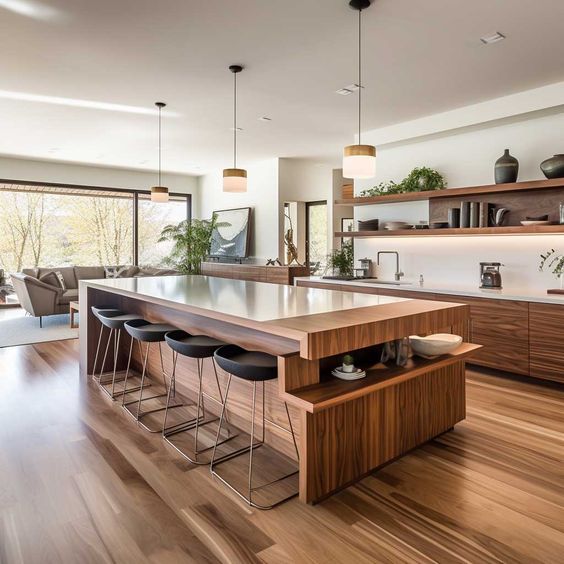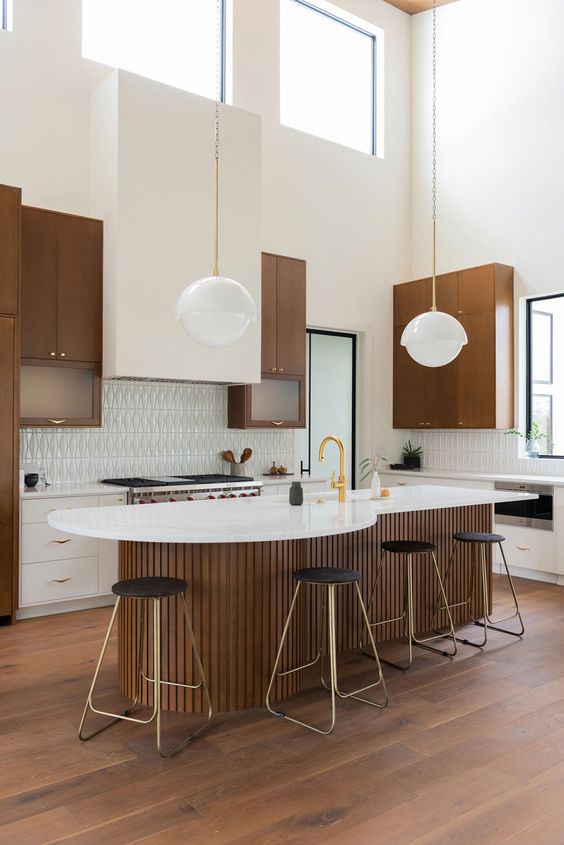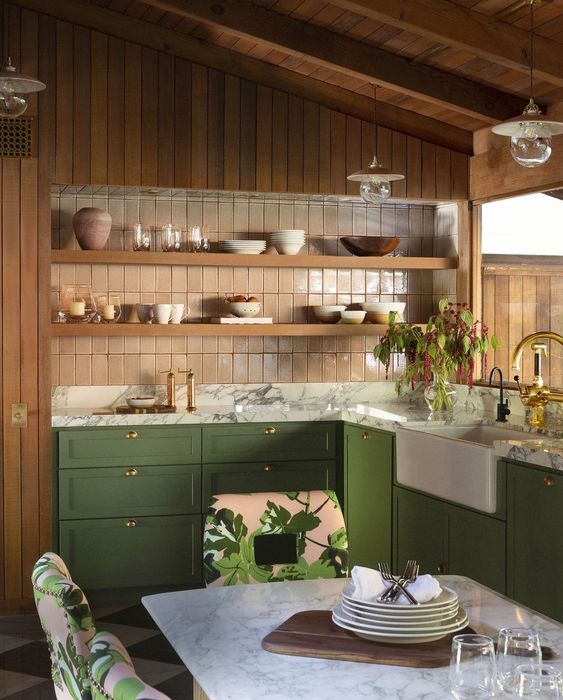Peyrevent.com – Mid-century modern kitchens are defined by clean lines and smooth surfaces; they can be bright and airy or warm and cozy.
Popular Design Features in Modern Kitchens
Wood is one of the most popular materials in mid-century modern kitchens because of its richness and personality. It can be used in cabinets and counters, as well as on flooring. Open shelving is a popular design feature in modern kitchens. It provides storage while also adding a pop of color and visual interest.
Depending on the placement and the items you put on the shelves, it can be a great way to display decorative plates or other trinkets. However, if not styled well, open shelving can look cluttered and cheap. To avoid that, consider using equal amounts of one shelf and styling it with a clear design aesthetic in mind. This way, everything looks curated and not like a jumble of things.

Color blocking is a trend that involves mixing two to three bold and often contradictory colors together to make an exciting statement piece. It was first popularized by Yves Saint Laurent in the 1960s with their Piet Mondrian-inspired dress at their Fall/Winter 1965-66 runway show. The Dutch artist Piet Mondrian was a leading proponent of Neo-Plasticism, a style of painting that advocated pure abstraction and reduction of form and color. This movement and Yves Saint Laurent’s dress helped catapult color-blocking into high fashion, where it still thrives today.
Creating Decorative Furniture Depicting Atomic Iconography
For your kitchen, consider incorporating color-blocking with different materials and hues to create visual interest and depth. Try pairing flat-panel teal cabinets with a white countertop to highlight their geometric detail, like in this mid-century modern home tour from Cambria Style. Throughout the 1950s, designers capitalized on the Atomic Age by creating decorative furnishings that capture the iconography of the atom and the atomic bomb. This style of interior design reflects the anxiety surrounding the nuclear threat, as well as the space race and the competition between Cold War rivals to develop nuclear power sources first.
The atom has been associated with a fearful and unpredictable force, but it has also been a powerful tool for innovation. From irradiating food to fueling interstellar travel, the potential of nuclear energy is immense. As a result, the Atomic Age became a cultural touchstone and inspired many design styles. Its principles influenced Googie architecture and Space Age design, and are still seen in contemporary retro designs.

If you’re looking for a pop of color and personality in your mid-century modern kitchen, consider adding retro wall art. These pieces often feature bold colors and iconic designs from the 50s, 60s, and 70s that evoke a sense of nostalgia and whimsy. If your space is a bit too minimalist for prints, try a removable sticker. These can come in a variety of shapes and sizes, and are perfect for brightening up small areas.
Classic Mid-Century Modern Feel
Using a wood panel on upper and lower cabinets can also give your kitchen a classic mid-century modern feel. This kitchen by Jackson Design and Remodeling out of San Diego, California, is a great example of that. In addition to the retro wood, this space has a sleek and stylish color palette. The black walls and cabinets add a touch of modernity to the room, but the wood backsplash, wishbone chairs, and matte finishes keep it grounded in mid-century style.

Mid-century modern kitchens have been around for a long time, and they’re still popular today. Characteristics of the style include clean lines, linear focus, and retro-inspired accents. Using these elements in your kitchen can help you achieve a modern and minimalist look without sacrificing style. Paint your island a different color than the rest of the cabinets in the space to make it stand out and give it more personality. Aside from painting your island, you can add some extra Mid-Century Modern flair by using terrazzo tiles on the floor or walls. These tile designs are as diverse and iconic as they are timeless, and it’s a great way to add color to your kitchen while still sticking with a clean and minimal theme.


